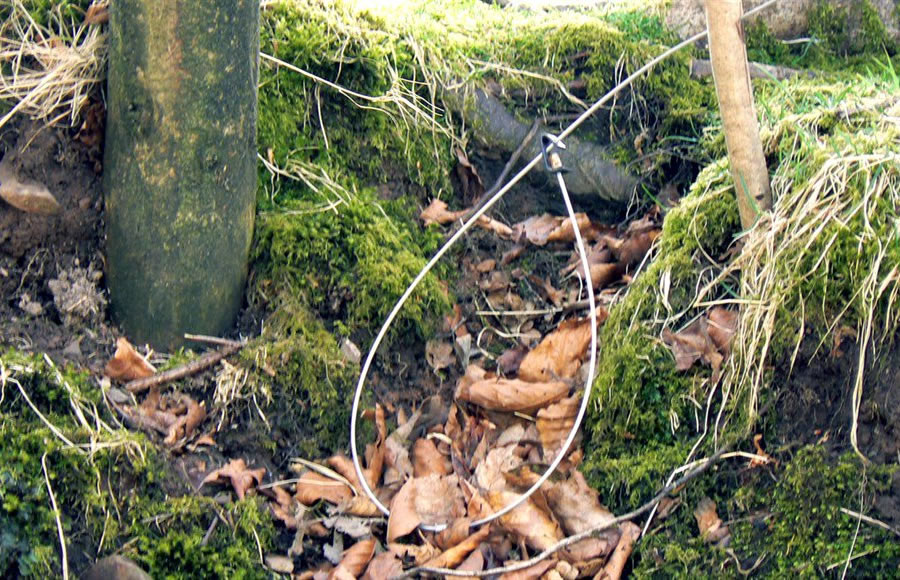
Snares - The Facts
Snares - wire nooses set to catch wild animals - have been in use for a great many years. Typically they are used as a means of killing foxes or rabbits. They are usually placed over the entrances or rabbit burrows or fox earths, or along runs or pathways thought to be used by the target species. The aim is to catch the victims around the neck, so that they die through strangulation or by dislocation of the neck. Some snares however feature a mechanism which stops the noose from closing too tightly. These snares hold their victims alive until the person who set them comes back. The animals are then killed, usually by shooting.
There are several types of snare:
Free-running. This is the basic type of snare. The wire is threaded through a simple eyelet at one end. This allows free movement of the wire in both directions - hence the term free-running. The snare tightens an animal caught within it struggles, but relaxes when the animal stops pulling.
A variation on the free-running snare is the 'rocking eye snare'. This has an eyelet which is heavier than normal, and does not allow the noose to slacken off so easily. The idea is that this type of snare does not allow a fox to back out of the noose once caught.
Self-locking. This type of snare has a small metal device at one end. The wire is threaded through two holes in the metal. The effect of this is that the wire will only run one way. When an animal is caught in a self-locking snare, the noose will tighten, but does not slacken off when the victim stops struggling.
Dual-purpose. This type of snare has the same sort of small metal device at one end as the self-locker. When the wire is threaded through one of the two holes in the metal, the snare acts as a free-runner. However, when the wire is threaded through the other hole instead, the snare becomes a self-locker.
Not quite free-running - and not quite self-locking. This type of snare has a V-shaped metal device at one end; the wire is threaded through two holes, one on each side of the 'V'. It seems that the wire does not run as freely as in a free-runner - but neither does it lock fully. Expert opinion is divided as to whether these snares should be treated as free-running or self-locking.

